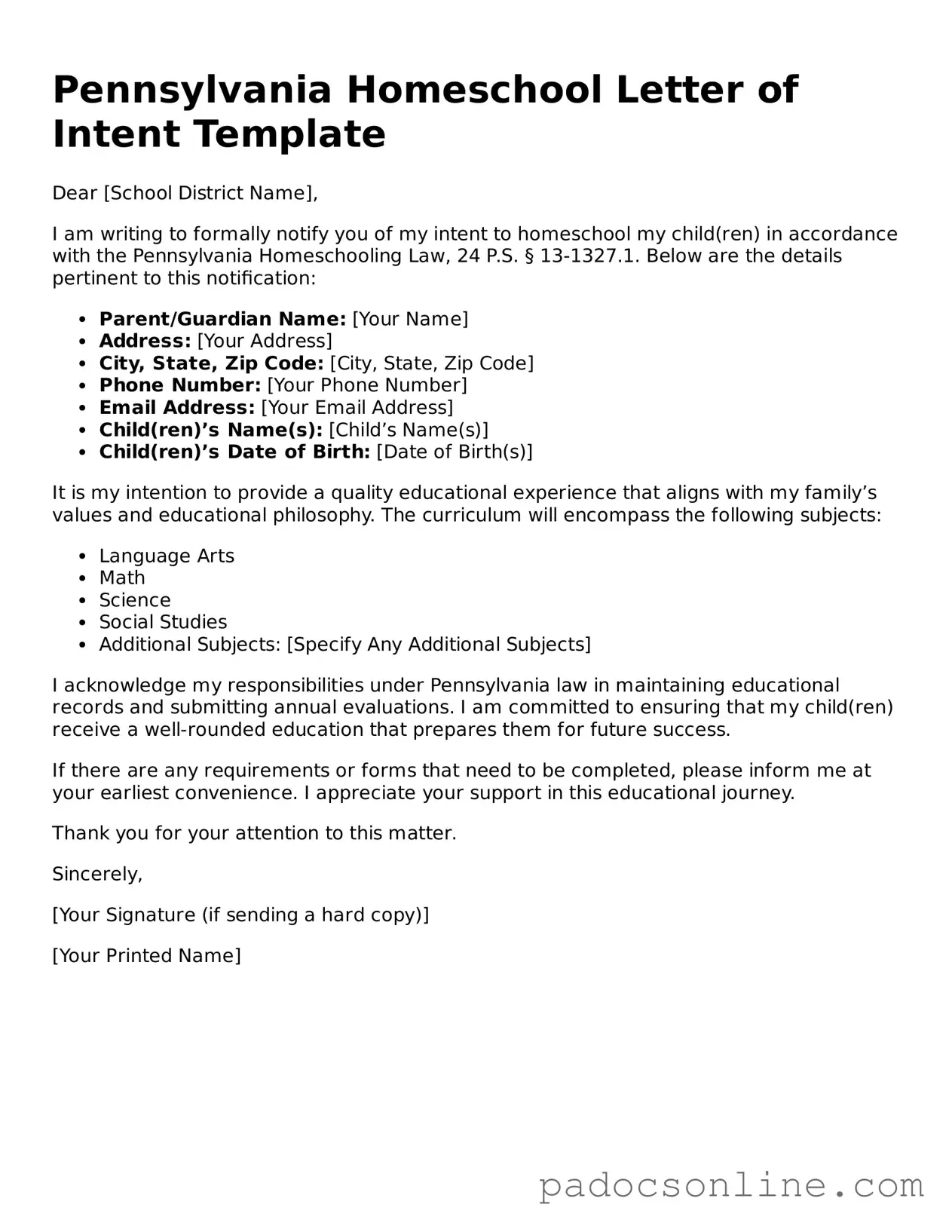Legal Homeschool Letter of Intent Document for the State of Pennsylvania
The Pennsylvania Homeschool Letter of Intent is a crucial document that families must submit to formally declare their intention to homeschool their children. This form serves as a notification to the local school district, ensuring compliance with state regulations and outlining the educational plans for the upcoming year. Understanding its requirements is essential for a smooth homeschooling experience; start the process by filling out the form below.
Fill Out My Form Now
